
Calato, the quartet of Javier Areal Vélez, Jorge Espinal, Agustín Genoud and Pablo Verón based in Buenos Aires, formed in 2010 as an improvisation and experimental composition group exploring music notation and graphic scores in convergence with free improvisation, performing on prepared electric guitars, drums, sampler and amplified voice, here taking on two works by John Cage: Variations I-III, and Four6.
In Stock
Quantity in Basket: None
Log In to use our Wish List
Shipping Weight: 3.00 units
EU & UK Customers:
Discogs.com can handle your VAT payments
So please order through Discogs
Sample The Album:
John Cage-composer
Javier Areal Velez-prepared guitar
Jorge Espinal-prepared guitar
Agustin Genoud-voice
Pablo Veron-drums, electronics
Click an artist name above to see in-stock items for that artist.
UPC: 752156102427
Label: ezz-thetics by Hat Hut Records Ltd
Catalog ID: ezz-thetics 1024
Squidco Product Code: 33576
Format: CD
Condition: Sale (New)
Released: 2023
Country: Switzerland
Packaging: Cardboard Gatefold
Recorded in Buenos Aires, Argentina, on December 21st, 2017, by Luciano Vitale.
Since the 1950s, as Argentinian group CALATO comment, Cage has become "an iconic, foundational figure...whose impact is still felt far beyond the strict borders of music". He remains best-known for 4'33" (1952). Here, he wanted people "to feel that the sounds of their environment constitute a music which is more interesting than the music which they would hear if they went to a concert hall". 4'33" is not the "silent sonata", but the "unintended noise sonata".
Cage's approach centred on chance and indeterminacy, and his Variations (1958-67) is built on diverse chance concepts. CALATO present different brief interpretations - one of Variations III, two of Variations II and four of Variations I. Cage's pieces aren't written for a specific instrumentation or number of players; the scores include strict rules but also require the performer to decide on many actions. As CALATO explain, each musician's part is formed through the superposition of translucent sheets with circles, lines and points, mixed randomly over a piece of paper. From these parts, the player measures coordinates to determine the sounds to be executed - when, how long, how often, the frequency, timbre, amplitude. In performance, a timer is the only syncing device.
It's often unclear whether a performer is helping to realise Cage's score, or to interpret it. Cage wrote graphic scores, but the boundary between a more typical Cage score and a graphic score isn't obvious. As Steve Beresford comments, "Cage uses arbitrariness in all sorts of different ways, according to the piece". CALATO exploit that openness to create performances of incredible detail and freshness.
I ask Javier Areal Vélez and Jorge Espinal whether CALATO "read" the score, or are they inspired by it in their improvisations? They explain how these performances differ from free improvisation. "We're working with the type of sounds that are ours, that we've been developing for years. But how we interact with each other differs from what we usually do when freely improvising. Here we are working with a fixed structure, strictly following the parts with precision...we're not responding aesthetically to what the rest of the band is playing or creating a formal structure as we go along...These tracks are the fixed outcome of various layers of individual decisions, brought together by chance."
Cage wanted to question "musical" hearing. For him, "sound is characterised by its pitch, its loudness, its timbre, and its duration ... silence [the] necessary partner of sound, is characterized only by its duration". He concluded that duration is the most fundamental characteristic of musical material, and it grounds the structure of 4'33" - its three movements last 30", 2'23", and 1'40" - and his late Number pieces. The latter "stretch" time. Sound events are situated far apart, and are causally disjunct; even when events coincide, it appears to be an accidental occurrence rather than a contrivance. In FOUR6 (1992), the longest performance on CALATO's album, each player chooses twelve sounds to use throughout the work, whose fixed duration is thirty minutes. These sounds appear in a specific order in each part, within flexible time margins, during which each player decides when to start and end.
Rhythm and not duration is essential to music, I reckon - so Cage's pieces, built on duration and not rhythm, are closer to soundart than music. Do Javier and Jorge agree? "Cage is most responsible for first bringing a myriad of notions on listening, time, silence and intention to a mainstream western audience, that ended up being fundamental for the emergence of soundarts as a standalone practise", they reply.
"But for us there's no doubt that these are pieces of music", they continue. "There's a lot of commitment needed from the players, who must spend a great amount of time writing their parts from Cage's meticulous instructions and following them precisely with chronometers ... listening to the group and subtly taking the overall sonic outcome into consideration. These are some of the many contradictions that we believe make these works musically interesting and not just theoretical exercises."
As on their fully improvised eponymous debut (2012), and Swong (2016), which featured open graphic scores by ensemble members, on the present album CALATO play loud, heavily amplified music. They deploy two prepared electric guitars, a drum set, an old school AKAI MPC2500 sampler and an amplified voice that rarely sings. But they don't see themselves as coming from a rock tradition. Rather they bridge the gap between contemporary and experimental composition, and popular music, noise, free jazz and other musics neglected by conservatories. As they comment, "Our music has strong elements of improvised music from the 60s until today, [and] wanders between noise, free jazz and reductionism ... we began to make our own graphic scores, and eventually we invited other composers to write especially for us."
I ask how CALATO's use of graphic scores help them break down the divisions between contemporary composition and improvisation? "We started as a noise improvisation band," they respond. "We spent several years playing together without any kind of parts or scores, just working deeply on listening to each other, reacting and generating a kind of togetherness that made it possible to create live music in a very fast and intuitive way." Then they started investigating different approaches to composition. "There's something about taking serious music not so seriously that lets you try lots of different things, from scholarly ways to almost ridiculous ideas, respecting all of them." This openness and eclecticism is a hallmark of an unusual and remarkable ensemble."-Andy Hamilton, February 2023
"CALATO is an improvisation and experimental composition quartet from Buenos Aires, Argentina. Its work draws from free jazz, punk, and abstract noise, exploring the possibilities of music notation and graphic scores in convergence with free improvisation, deep listening and explosive interaction.
CALATO's sound is based around two wildly attacked prepared electric guitars, a drum set, sampler and an amplified voice that does all kind of strange noises but rarely actually sings. It was formed in 2010 by Javier Areal Vélez, Jorge Espinal, Agustín Genoud and Pablo Verón, who have been a fundamental part of the Buenos Aires' experimental scene during the last decade, leading projects as Ricarda Cometa, COSO, Volll and Los Odios.
Its debut album (CALATO, 2012, Jardinista!Recs ) consists in ten short dynamic and fully improvised pieces, while its second album (SWONG, 2016, PSH Ediziones) is based on open graphic scores written by the ensemble members.
In 2017 CALATO commissioned and premiered works by renowned Argentinian composers (Federico Barabino, Lucio Capece, Cecilia Castro, Adriana de los Santos, Fernando Manassero, Nicolás Varchausky, Leonello Zambón and Zypce), and in 2018 they premiered a new piece from avant-jazz North American composer Chris Pitsiokos.
In late 2017, Teatro Nacional Cervantes in Buenos Aires asked CALATO to perform personal renditions of John Cage's iconic open works: Variations I (1958), Variations II (1961), Variations III (1963) and FOUR6 (1992).
CALATO has performed widely in Argentina's most renowned venues and has toured Uruguay (2014), Brasil (2016, and International Experimental Music Festival 2017) and Perú (Festival Integraciones, 2018) and Colombia (2019)."-
Get additional information at Calato Website
Artist Biographies
• Show Bio for John Cage "John Milton Cage Jr. (September 5, 1912 - August 12, 1992) was an American composer, music theorist, writer, philosopher, and artist. A pioneer of indeterminacy in music, electroacoustic music, and non-standard use of musical instruments, Cage was one of the leading figures of the post-war avant-garde. Critics have lauded him as one of the most influential American composers of the 20th century. He was also instrumental in the development of modern dance, mostly through his association with choreographer Merce Cunningham, who was also Cage's romantic partner for most of their lives. Cage is perhaps best known for his 1952 composition 4′33″, which is performed in the absence of deliberate sound; musicians who present the work do nothing aside from being present for the duration specified by the title. The content of the composition is not "four minutes and 33 seconds of silence," as is often assumed, but rather the sounds of the environment heard by the audience during performance. The work's challenge to assumed definitions about musicianship and musical experience made it a popular and controversial topic both in musicology and the broader aesthetics of art and performance. Cage was also a pioneer of the prepared piano (a piano with its sound altered by objects placed between or on its strings or hammers), for which he wrote numerous dance-related works and a few concert pieces. The best known of these is Sonatas and Interludes (1946-48). His teachers included Henry Cowell (1933) and Arnold Schoenberg (1933-35), both known for their radical innovations in music, but Cage's major influences lay in various East and South Asian cultures. Through his studies of Indian philosophy and Zen Buddhism in the late 1940s, Cage came to the idea of aleatoric or chance-controlled music, which he started composing in 1951. The I Ching, an ancient Chinese classic text on changing events, became Cage's standard composition tool for the rest of his life. In a 1957 lecture, Experimental Music, he described music as "a purposeless play" which is "an affirmation of life - not an attempt to bring order out of chaos nor to suggest improvements in creation, but simply a way of waking up to the very life we're living"." ^ Hide Bio for John Cage • Show Bio for Javier Areal Velez "Javier Areal Vélez (Buenos Aires, 1985) is a composer, improviser and curator, who performs mostly on electric guitar, with or without objects stuffed between its strings. His musical approach relies heavily on a primal technique that emphasizes timbre and rhythm, avoiding traditional forms in favor of intensity and dynamic contrast. The physicality of his interactions with the guitar create estranged sonic entities that evolve haphazardly outside of specific genres. After completing studies of Electroacoustic Composition at the National University of Quilmes, Javier pursued a fruitful career in experimental music as a soloist, band leader and through collaborations with artists such as Akira Sakata, Paal Nielsen-Love, Chris Pitsiokos, Audrey Chen, Brian Chase, Shayna Dunkelman, Nicola Hein, Axel Dörner, Ryoko Ono, Richard Scott, Andrew Drury, Jorge Espinal, Jack Wright and Violeta García. Javier's main group is CALATO (active since 2010), an experimental improvisation and composition quartet consisting of two wildly attacked prepared electric guitars, a drum set, a sampler and an amplified voice that makes all kinds of strange noises but rarely actually sings. CALATO has performed widely in Argentina's most renowned venues and has toured Uruguay (2014), Brazil (2016, and International Experimental Music Festival 2017), Peru (Festival Integraciones, 2018) and Colombia (2019). CALATO has also commissioned and premiered works by renowned Argentinian composers (Federico Barabino, Lucio Capece, Cecilia Castro, Adriana de los Santos, Fernando Manassero, Nicolás Varchausky, Leonello Zambón and Zypce) and from avant-jazz American composer Chris Pitsiokos. Other commitments have included performing and composing on noise/postpunk trio COSO (2009-2015) and on bizarre experimental pop band El Helicóptero (2013-2018), as well as being a founding member of Buenos Aires' Improvisers Orchestra (2010-2011). In the last couple of years, Javier has also focused intensely on solo performance, with three different setups: LOUD prepared electric guitar; duo consisting of prepared electric guitar and a laptop running a bad-tempered custom MAX/MSP patch that interacts using samples from other musicians; and an electronic set on Elektron Octatrack. Over the last decade, Javier has toured extensively across South and North America, Europe and Japan. He has been invited to the French New Music Focus (Strasbourg, 2019), the Arts Delegates Program of the British Council (London, 2018), and has attended residencies at the Experimental Center of Teatro Argentino (La Plata, 2018), Centro de Investigaciones Artísticas (Buenos Aires, 2013) and Art Omi (New York, 2012). His music can be found on a dozen international labels such as HatHut (Switzerland), Buh Records (Peru), Stereo-Neg & Geweih Ritual Documents (USA), Audition Records (Mexico), El Silencio (Chile), Jardinista! and PSH Ediziones (Arg). Javier is the founder and director of RUIDO, an ongoing music series which aims to present the foremost experimental artists of diverse styles from all over the world for the first time in Argentina, connecting them with local musicians and audiences through a network of concerts, workshops and masterclasses. RUIDO has produced the first visits of Xiu Xiu, Bill Orcutt, Jeremy Gara, Los Pirañas, Julien Desprez and Mark Fell. In 2020, RUIDO has teamed up with experimental label TVL REC to produce STREAMING FEST, an international online festival of experimental music. The series has hosted home presentations by more than 100 artists from all over the world. Javier's plans for 2020-2021 include the release of his first solo guitar album (Nefarious Industries, USA), and four releases by CALATO: JOHN CAGE'S VARIATIONS (HatHut, Switzerland); CALATO + VientoX (Vestibular Records, USA), CALATO + 8 COMPOSERS and CALATO x CALATO." ^ Hide Bio for Javier Areal Velez • Show Bio for Jorge Espinal "Peruvian guitarist/improviser, active in the Buenos Aires free improvisation and experimental music scene. He has a deep interest in sound and believes in error as a creative source. He usually works with prepared guitar. He has had the opportunity to tour across Peru, Argentina, Chile, Uruguay, USA and Europe." ^ Hide Bio for Jorge Espinal • Show Bio for Agustin Genoud "Agustin Genoud (1984 - Argentina, Baradero) I work as a performer, musician and scholar in the fields of contemporary voice, post-humanism & new media. I build algorithms and systems that expand and transform the vocal sound production. I create expanded voice techniques that disrupt and interfere with the humanly assigned sounds to the vocal tract and try to expand those capacities through machinic and animalistic behaviors. I've been heard at Sonandes Sound Art International Biennal / Music
Makers Hack Lab - CTM Festival (Berlín) / Pure Data Convention (Weimar) / Centro Nacional
de la Música / Terén Pole performativního umění (Brno) / Razzmattazz (Barcelona) / Búnker (Torino) / The Wrong International Biennal / Tsonami Sound Art Festival (Chile) / MALBA / Festival Internacional de Música Experimental 2017 (Sao Paulo) / Metabody Symposium / New Materialisms Symposium / Colón Theatre Experimental Centre,
among many other places.
As a scholar and lecturer my work deals around post-humanism, new materialisms, expanded voice performances & biopolitics, I teach and research at the National University for the Arts (New Media Department) & Tres de Febrero University." ^ Hide Bio for Agustin Genoud • Show Bio for Pablo Veron "Pablo Verón is a composer, producer and Argentine drummer born in 1983, his search focuses on the possibilities offered by electronics through sampling and synthesis. His first album, Nieves (2005, Natural Media) was received with great repercussion in the experimental electronic music scene. In his second album, Pororoca, published in 2016 by the Fungi label, Verón explores and samples his own material to deepen textures and a completely new discourse, generating a temporary identity loop. The following work, edited by the TRRUENO label, Live @ Ruido (2018, Trrueno), is a live set made at the Experimental Music Noise Cycle opening the show for Xiu Xiu in October 2017. Since 2012 he's part of Calato, a loud electric quartet of improvised and composed pieces. The last work edited by the Abyss label under the pseudonym: POV, is a compilation of unpublished works in the last 6 years on manipulation of jazz samples, folk percussion and field recordings with a more percussive treatment." ^ Hide Bio for Pablo Veron
6/18/2025
Have a better biography or biography source? Please Contact Us so that we can update this biography.
6/18/2025
Have a better biography or biography source? Please Contact Us so that we can update this biography.
6/18/2025
Have a better biography or biography source? Please Contact Us so that we can update this biography.
6/18/2025
Have a better biography or biography source? Please Contact Us so that we can update this biography.
6/18/2025
Have a better biography or biography source? Please Contact Us so that we can update this biography.
Track Listing:
1. Variations I (1958) - version 1 5:56
2. Variations II (1961) - version 1 1:02
3. Variations II (1961) - version 2 0:59
4. Variations I (1958) - version 2 2:05
5. Variations II (1961) - version 3 1:04
6. Variations II (1961) - version 4 0:58
7. Variations III (1963) 4:20
8. Four6 (1992) 29:58
Hat Art
Compositional Forms
Avant-Garde
Improvised Music
Electro-Acoustic
Electro-Acoustic Improv
John Cage
Mexico, Central & South Americas + Islands
Quartet Recordings
New in Compositional Music
Hat Hut Masters Sale
Search for other titles on the label:
ezz-thetics by Hat Hut Records Ltd.


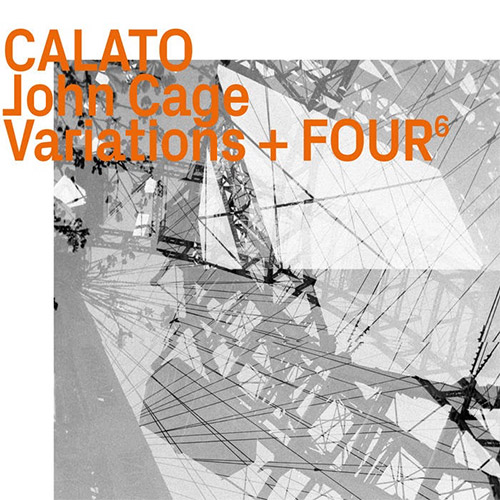
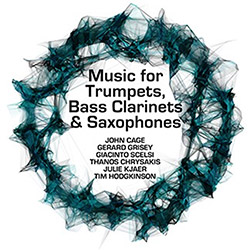
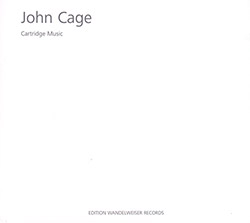
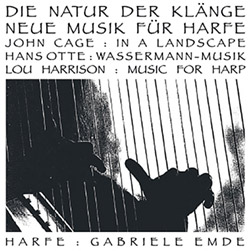






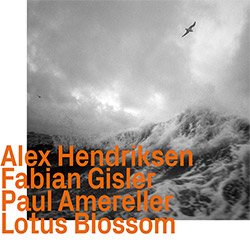





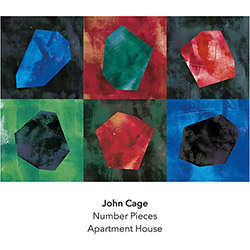
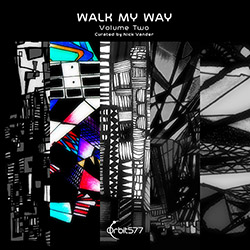

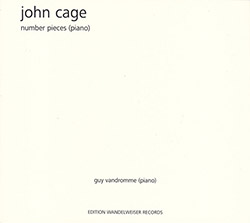
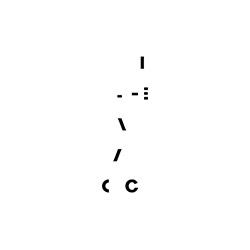

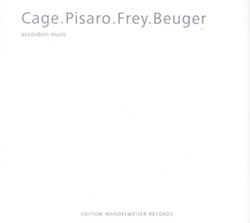



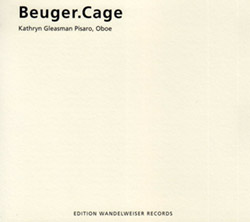



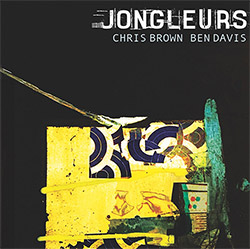
![BlueRing Improvisers: Materia [2 CDs]](https://www.teuthida.com/productImages/misc4/36513.jpg)




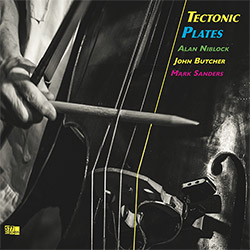


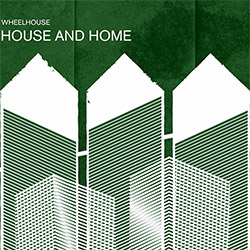
![Wheelhouse (Rempis / Adasiewicz / McBride): House And Home [VINYL]](https://www.teuthida.com/productImages/misc4/36462.jpg)
![+DOG+: The Light Of Our Lives [2 CDs]](https://www.teuthida.com/productImages/misc4/36009.jpg)


![Parker, Evan / Jean-Marc Foussat: Insolence [VINYL]](https://www.teuthida.com/productImages/misc4/36398.jpg)










![Deupree, Jerome / Sylvie Courvoisier / Lester St. Louis / Joe Morris: Canyon [2 CDs]](https://www.teuthida.com/productImages/misc4/36404.jpg)



![Eventless Plot | Haarvol: The Subliminal Paths [CASSETTE + DOWNLOAD]](https://www.teuthida.com/productImages/misc4/36232.jpg)










![Eventless Plot | Francesco Covarino: Methexis [CASSETTE + DOWNLOAD]](https://www.teuthida.com/productImages/misc4/36231.jpg)



![Das B (Mazen Kerbaj / Mike Majkowski / Magda Mayas / Tony Buck): Love [VINYL]](https://www.teuthida.com/productImages/misc4/36329.jpg)


![Eternities: Rides Again [CASSETTE]](https://www.teuthida.com/productImages/misc4/36247.jpg)
![Lopez, Francisco: Untitled (2021-2022) [2 CDs]](https://www.teuthida.com/productImages/misc4/36438.jpg)






![Money : Money 2 [2 CDs]](https://www.teuthida.com/productImages/misc4/35894.jpg)




![Klinga, Erik: Elusive Shimmer [VINYL]](https://www.teuthida.com/productImages/misc4/36258.jpg)
![CHANGES TO blind (Phil Zampino): Volume 9 - I Wave on a Fine Vile Mist [CD + DOWNLOAD]](https://www.teuthida.com/productImages/misc4/36061.jpg)

![Wallmart / Rubbish: Asset Protection [split CD]](https://www.teuthida.com/productImages/misc4/35900.jpg)


![+Dog+: The Family Music Book Vol. 5 [2 CDs]](https://www.teuthida.com/productImages/misc4/35897.jpg)
![Kuvveti, Deli : Kuslar Soyledi [CASSETTE w/ DOWNLOAD]](https://www.teuthida.com/productImages/misc4/36107.jpg)

![Brown, Dan / Dan Reynolds: Live At The Grange Hall [unauthorized][CASSETTE]](https://www.teuthida.com/productImages/misc4/36245.jpg)







![Palestine, Charlemagne / Seppe Gebruers: Beyondddddd The Notessssss [VINYL]](https://www.teuthida.com/productImages/misc4/36206.jpg)
![Palestine, Charlemagne / Seppe Gebruers: Beyondddddd The Notessssss [NEON GREEN VINYL]](https://www.teuthida.com/productImages/misc4/36207.jpg)

![Laubrock, Ingrid: Purposing The Air [2 CDs]](https://www.teuthida.com/productImages/misc4/35639.jpg)

![Yoko, Ono / The Great Learning Orchestra: Selected Recordings From Grapefruit [2 CDs]](https://www.teuthida.com/productImages/misc4/35841.jpg)







![Zorn, John / JACK Quartet: The Complete String Quartets [2 CDs]](https://www.teuthida.com/productImages/misc4/35609.jpg)

![Lonsdale, Eden: Dawnings [2 CDs]](https://www.teuthida.com/productImages/misc4/35480.jpg)



![Sorry For Laughing (G. Whitlow / M. Bates / Dave-Id / E. Ka-Spel): Rain Flowers [2 CDS]](https://www.teuthida.com/productImages/misc4/35985.jpg)

![Rolando, Tommaso / Andy Moor : Biscotti [CASSETTE w/ DOWNLOADS]](https://www.teuthida.com/productImages/misc4/36106.jpg)


![Electric Bird Noise / Derek Roddy: 8-10-22 [CD EP]](https://www.teuthida.com/productImages/misc4/35970.jpg)








![Elephant9 : Mythical River [VINYL]](https://www.teuthida.com/productImages/misc4/34624.jpg)



![Elephant9 with Terje Rypdal: Catching Fire [VINYL 2 LPs]](https://www.teuthida.com/productImages/misc4/35355.jpg)
![Deerlady (Obomsawin, Mali / Magdalena Abrego): Greatest Hits [VINYL]](https://www.teuthida.com/productImages/misc4/34876.jpg)







![Surplus 1980: Illusion of Consistency [CD]](https://www.teuthida.com/productImages/misc4/35069.jpg)
![Staiano, Moe: Away Towards the Light [VINYL + DOWNLOAD]](https://www.teuthida.com/productImages/misc4/35037.jpg)
![Coley, Byron: Dating Tips for Touring Bands [VINYL]](https://www.teuthida.com/productImages/misc4/17906.jpg)

![Lost Kisses: My Life is Sad & Funny [DVD]](https://www.teuthida.com/productImages/misc4/lostKissesDVD.jpg)